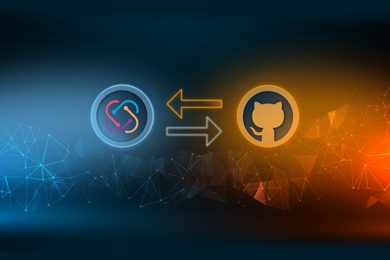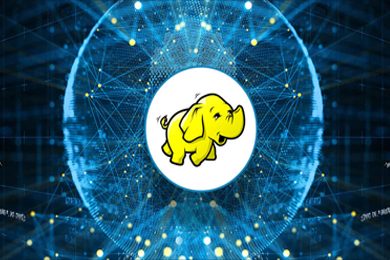This plan includes
- Limited free courses access
- Play & Pause Course Videos
- Video Recorded Lectures
- Learn on Mobile/PC/Tablet
- Quizzes and Real Projects
- Lifetime Course Certificate
- Email & Chat Support
What you'll learn?
- Tokenizing text data
- Stemming and lemmatization
- Chunks, corpuses
- Extracting document term matrix using the Bag of Words model
- Building a category predictor
- Constructing a gender identifier
- Building a sentiment analyzer
- Topic modeling using Latent Dirichlet Allocation
- Dealing with WordNet
- Similarity between documents
- Keyword search VS Semantic search
- Building your vocabulary for any NLP model
- Reducing Dimensions of your Vocabulary for Machine Learning Models
Course Overview
THIS COURSE IS FOR BEGINERS OR INTERMEDIATES, IT IS NOT FOR EXPERTS
This course is a part of a series of courses specialized in artificial intelligence :
-
Understand and Practice AI - (NLP)
This course is focusing on the NLP:
-
Learn key NLP concepts and intuition training to get you quickly up to speed with all things NLP.
-
I will give you the information in an optimal way, I will explain in the first video for example what is the concept, and why is it important, what is the problem that led to thinking about this concept and how can I use it (Understand the concept). In the next video, you will go to practice in a real-world project or in a simple problem using python (Practice).
-
The first thing you will see in the video is the input and the output of the practical section so you can understand everything and you can get a clear picture!
-
You will have all the resources at the end of this course, the full code, and some other useful links and articles.
In this course, we are going to learn about natural language processing. We will discuss various concepts such as tokenization, stemming, and lemmatization to process text. We will then discuss how to build a Bag of Words model and use it to classify text. We will see how to use machine learning to analyze the sentiment of a given sentence. We will then discuss topic modeling and implement a system to identify topics in a given document. We will start with simple problems in NLP such as Tokenization Text, Stemming, Lemmatization, Chunks, Bag of Words model. and we will build some real stuff such as :
-
Learning How to Represent the Meaning of Natural Language Text
-
Building a category predictor to predict the category of a given text document.
-
Constructing a gender identifier based on the name.
-
Building a sentiment analyzer used to determine whether a movie review is positive or negative.
-
Topic modeling using Latent Dirichlet Allocation
-
Feature Engineering
-
Dealing with corpora and WordNet
-
Dealing With your Vocabulary for any NLP and ML model
TIPS (for getting through the course):
-
Take handwritten notes. This will drastically increase your ability to retain the information.
-
Ask lots of questions on the discussion board. The more the better!
-
Realize that most exercises will take you days or weeks to complete.
-
Write code yourself, don’t just sit there and look at my code.
You don't know anything about NLP? let's break it down!
I am always available to answer your questions and help you along your data science journey. See you in class!
NOTICE that This course will be modified and I will add new content and new concepts from one time to another, so stay informed! :)
Pre-requisites
- Basics of Python.
Target Audience
- Beginner python developers curios about NLP, this course is not for experienced data scientists
- Anyone who wants to understand NLP concepts and build some projects
Curriculum 71 Lectures 02:38:12
Section 1 : Getting an Idea of NLP and its Applications
- Lecture 2 :
- By The End Of This Section
- Lecture 3 :
- Installation
- Lecture 4 :
- Tips
- Lecture 5 :
- U - Tokenization
- Lecture 6 :
- P - Tokenization
- Lecture 7 :
- U - Stemming
- Lecture 8 :
- P - Stemming
- Lecture 9 :
- U - Lemmatization
- Lecture 10 :
- P - Lemmatization
- Lecture 11 :
- U - Chunks
- Lecture 12 :
- P - Chunks
- Lecture 13 :
- U - Bag Of Words
- Lecture 14 :
- P - Bag Of Words
- Lecture 15 :
- U - Category Predictor
- Lecture 16 :
- P - Category Predictor
- Lecture 17 :
- U - Gender Identifier
- Lecture 18 :
- P - Gender Identifier
- Lecture 19 :
- U - Sentiment Analyzer
- Lecture 20 :
- P - Sentiment Analyzer
- Lecture 21 :
- U - Topic Modeling
- Lecture 22 :
- P - Topic Modeling
- Lecture 23 :
- Summary
Section 2 : Feature Engineering
- Lecture 1 :
- Using Google Colab
- Lecture 2 :
- Introduction
- Lecture 3 :
- One Hot Encoding
- Lecture 4 :
- Count Vectorizer
- Lecture 5 :
- N-grams
- Lecture 6 :
- Hash Vectorizing
- Lecture 7 :
- Word Embedding
- Lecture 8 :
- FastText
Section 3 : Dealing with corpus and WorldNet
- Lecture 1 :
- Introduction
- Lecture 2 :
- In-built corpora
- Lecture 3 :
- External Corpora
- Lecture 4 :
- Frequency Distribution
- Lecture 5 :
- Corpuses & Frequency Distribution
- Lecture 6 :
- WordNet
- Lecture 7 :
- Wordnet with Hyponyms and Hypernyms
- Lecture 8 :
- The Average according to WordNet
Section 4 : Create your Vocabulary for any NLP Model
- Lecture 1 :
- Putting the previous knowledge together
- Lecture 2 :
- Introduction and Challenges
- Lecture 3 :
- 1 - Building your Vocabulary
- Lecture 4 :
- 2 - Building your Vocabulary
- Lecture 5 :
- 3 - Building your Vocabulary
- Lecture 6 :
- 4 - Building your Vocabulary
- Lecture 7 :
- 5 - Building your Vocabulary
- Lecture 8 :
- Dot Product
- Lecture 9 :
- Similarity using Dot Product
- Lecture 10 :
- Reducing Dimensions of your Vocabulary using token improvement
- Lecture 11 :
- Reducing Dimensions of your Vocabulary using n-grams
- Lecture 12 :
- Reducing Dimensions of your Vocabulary using normalizing
- Lecture 13 :
- Reducing Dimensions of your Vocabulary using case normalization
- Lecture 14 :
- When to use stemming and lemmatization?
- Lecture 15 :
- Sentiment Analysis Overview
- Lecture 16 :
- Two approaches for sentiment analysis
- Lecture 17 :
- Sentiment Analysis using rule-based
- Lecture 18 :
- Sentiment Analysis using machine learning - 1
- Lecture 19 :
- Sentiment Analysis using machine learning - 2
- Lecture 20 :
- Summary
Section 5 : Word2Vec in Detail and what is going on under the hood
- Lecture 1 :
- Introduction
- Lecture 2 :
- Bag of words in detail
- Lecture 3 :
- Vectorizing
- Lecture 4 :
- Vectorizing and Cosine Similarity
- Lecture 5 :
- Topic modeling in Detail
- Lecture 6 :
- Make your Vectors will more reflect the Meaning, or Topic, of the Document
- Lecture 7 :
- Sklearn in a short way
- Lecture 8 :
- Summary
Section 6 : Find and Represent the Meaning or Topic of Natural Language Text
- Lecture 1 :
- Note!
- Lecture 2 :
- Keyword Search VS Semantic Search
- Lecture 3 :
- Problems in TI-IDF leads to Semantic Search
- Lecture 4 :
- Transform TF-IDF Vectors to Topic Vectors under the hood
Our learners work at
Frequently Asked Questions
How do i access the course after purchase?
It's simple. When you sign up, you'll immediately have unlimited viewing of thousands of expert courses, paths to guide your learning, tools to measure your skills and hands-on resources like exercise files. There’s no limit on what you can learn and you can cancel at any time.Are these video based online self-learning courses?
Yes. All of the courses comes with online video based lectures created by certified instructors. Instructors have crafted these courses with a blend of high quality interactive videos, lectures, quizzes & real world projects to give you an indepth knowledge about the topic.Can i play & pause the course as per my convenience?
Yes absolutely & thats one of the advantage of self-paced courses. You can anytime pause or resume the course & come back & forth from one lecture to another lecture, play the videos mulitple times & so on.How do i contact the instructor for any doubts or questions?
Most of these courses have general questions & answers already covered within the course lectures. However, if you need any further help from the instructor, you can use the inbuilt Chat with Instructor option to send a message to an instructor & they will reply you within 24 hours. You can ask as many questions as you want.Do i need a pc to access the course or can i do it on mobile & tablet as well?
Brilliant question? Isn't it? You can access the courses on any device like PC, Mobile, Tablet & even on a smart tv. For mobile & a tablet you can download the Learnfly android or an iOS app. If mobile app is not available in your country, you can access the course directly by visting our website, its fully mobile friendly.Do i get any certificate for the courses?
Yes. Once you complete any course on our platform along with provided assessments by the instructor, you will be eligble to get certificate of course completion.
For how long can i access my course on the platform?
You require an active subscription to access courses on our platform. If your subscription is active, you can access any course on our platform with no restrictions.Is there any free trial?
Currently, we do not offer any free trial.Can i cancel anytime?
Yes, you can cancel your subscription at any time. Your subscription will auto-renew until you cancel, but why would you want to?
Instructor

72251 Course Views
1 Courses



 Tech & IT
Tech & IT
 Business
Business
 Coding & Developer
Coding & Developer
 Finance & Accounting
Finance & Accounting
 Academics
Academics
 Office Applications
Office Applications
 Art & Design
Art & Design
 Marketing
Marketing
 Health & Wellness
Health & Wellness
 Sounds & Music
Sounds & Music
 Lifestyle
Lifestyle
 Photography
Photography

















